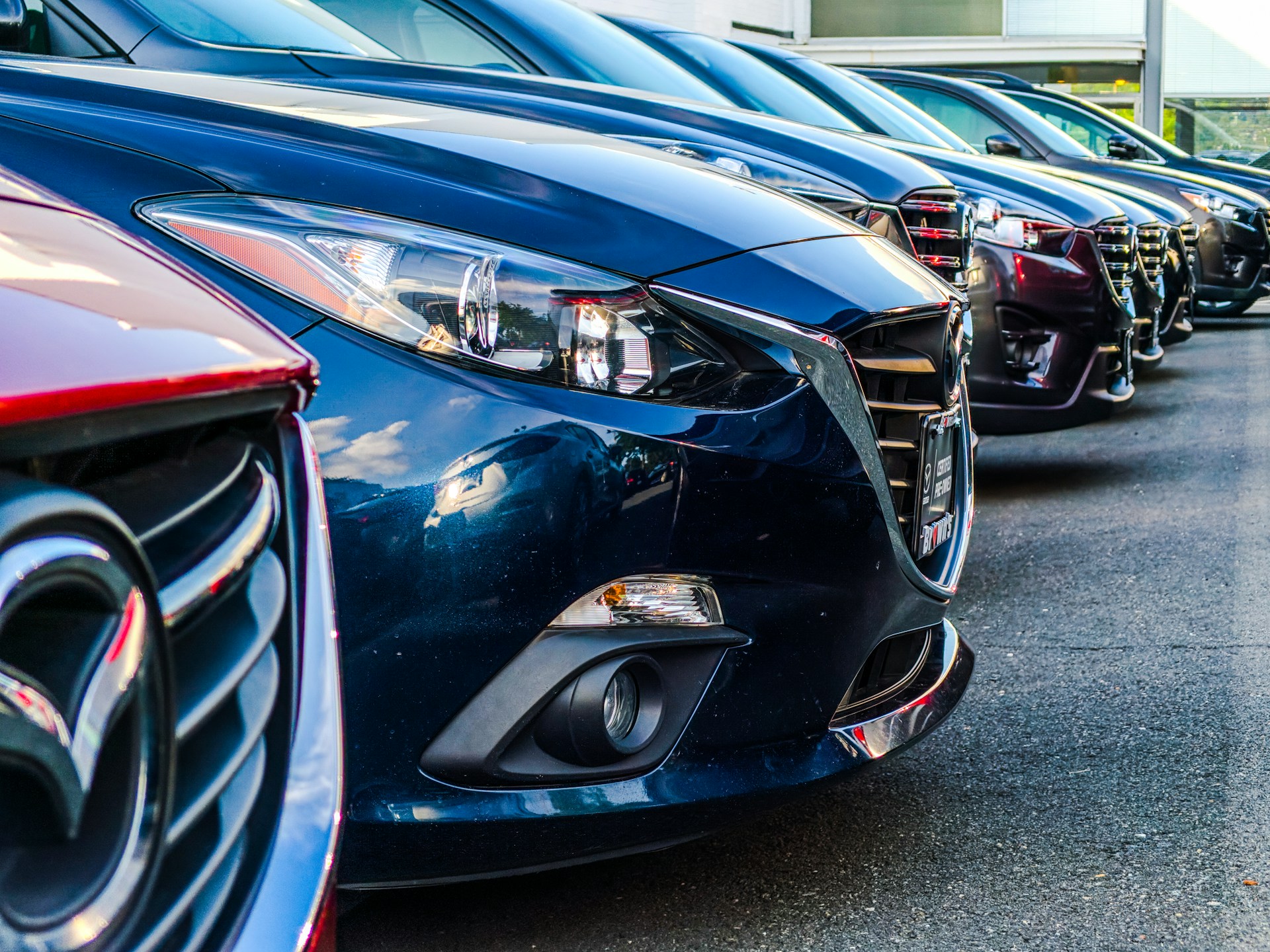In Russia, a new car recycling fee is to be introduced from the end of 2025. This mandatory payment directly affects the cost of transportation and what kind of cars Russians will eventually start using.
Tell us for what purpose the authorities decided to change the recycling fee, why at what point its launch was delayed, and how these changes will affect automakers, dealers and customers.
What is a recycling fee and why is it needed?

Recycling fee is a one-time payment that is collected from each vehicle produced or imported into the Russian Federation in order to cover the costs of its recycling after the end of its service life and reduce harm to the environment.
Recycling collection has been operating in Russia since 2012. It is paid:
▶︎ manufacturer — for cars manufactured in Russia;
▶︎ importer — for imported cars, the fee is paid at customs clearance;
▶︎ buyer or owner – if the recycling fee has not been paid previously (for example, when purchasing a used car, the assembly of which was not included);
▶︎ persons who buy a car not for personal use — they pay the commercial recycling fee in full.
Thus, the recycling fee is paid when importing a car from abroad or when producing it in the Russian Federation, and it is usually included in the final price of the car, especially when purchasing a new car through dealers.
Increasing scrap tax rates typically result in higher prices for new vehicles, so any changes to the payment are immediately reflected in the market.
Disposal collection besides required for the game. It is called for cars, trucks, buses, special equipment, trailers and other vehicles.
A complete list of equipment is available in two lists: self-propelled vehicles and wheeled vehicles.
There are categories for which recycling fees are not charged – for example, vintage cars, cars of diplomatic missions and temporarily imported vehicles.
How to pay recycling tax now and what they plan to change

As of October 2025, recycling fees in Russia are paid according to a method that takes into account the age of the car. and engine size.
To solve the problem of upcoming innovations, an individual importing one car for personal use and without resale during the year while maintaining the benefit:
▶︎ 3.4 thousand rubles — for a new car (up to three years);
▶︎ 5.2 thousand rubles – a seized car older than three years.
However, earlier the Ministry of Industry and Trade proposed to revise the method of calculating recycling collection and introduce a progressive school corresponding to the type and power of the engine.
Thus, the basic tariff remains the same for cars with a capacity of up to 160 hp. s., but for more powerful cars the rates will increase many times, reaching millions of rubles for top models. At the same time, the Ministry of Industry and Trade estimates that the mass segment is acting “to the side”, since it exceeds 80% of the 45 million passenger cars. in Russia there are more modest engines.
The new measures are aimed at supporting “serious” imports, supporting Russian automakers and reducing the share of powerful companies. foreign cars on the market. In addition, the ministry noted the growth of powerful cars with a small number of engines, and therefore assembly is only within the scope of international meaning.
How will recycling collection be carried out after the increase?

The Ministry of Industry and Trade proposed maintaining a preferential recycling fee for individuals only if the vehicle’s power is up to 160 hp. If the power is higher, individuals will pay commercial rates on a progressive scale. And this is already hundreds of thousands and millions of rubles. For hybrids and electric vehicles, the total power of the power plant is taken.
As Auto.ru writes with reference to data from the Ministry of Industry and Trade, cars up to 160 hp. account for approximately 88% of fleets of initial registrations over the past 5 years, meaning most buyers retain benefits. Already paid recycling fees will not be recalculated.
Here’s how the consequences of disposal fees are calculated: you need to multiply the base supply by a coefficient.
For passenger cars, the base rate will be 20,000 rubles. The set of coefficients will also change: there will be an increase in dependence on intensity, and not just on engine size and age. auto.
Now the recycling fee for example cars will cost 3,400 rubles if the car is new and for personal use. But according to the new rules it will be like this:
- Toyota RAV4, 205 hp → ≈ 1,970,000 rub.
- BMW X5, 352 hp → ≈ 2,360,000 rub.
- Gili Monjaro, 238 hp → ≈ 842,000 rub.
- Hyundai Palisade, 281 hp → ≈ 2,180,000 rub.
- Volkswagen Tiguan, 220 hp. → ≈ 794,000 rub.
- Skoda Kodiak, 190 hp → ≈ 750,000 rub.
- Li Auto L7 (hybrid), 449 hp → ≈ 3,040,000 rub.
But those who feel almost no changes are buyers of any models up to 160 hp. For example, Toyota Corolla Hybrid, Lada Vesta and the like.
💰 The authorities plan to carry out indexation and introduce new calculation rules taking into account engine power and implementation. progressive assessment from November 1, 2025. But in general, implementation measures were postponed for at least a month – until December 1.
Why was the delay needed?

In this regard, the demand for foreign cars has become frantic, since ensuring the sustainability of Russia’s new rules has led to the emergence of many transactions to register cars on old, more favorable terms. This led to days-long queues at border checkpoints.
As a result, many buyers risked not meeting the deadline due to delays.
First Deputy Prime Minister Denis Manturov, after contacting this leader from “Business Activist of Russia,” forced the deadline for increasing the recycling fee to be postponed. The politician justifies the need to enter a transition period to comply with legislative norms, and, if necessary, extend it.
🚙 Important Note: The recycling collection mechanism itself is not being revised – we are talking about postponing the deadline for raising rates.
What does this mean for the market?

The deferment is beneficial to all buyers: it allows you to purchase a car on old and more favorable terms. Recalculation of the scrap tax from December 1 will primarily lead to an increase in the price of a car with more power than 160 hp. However, RG experts interviewed believe that ultimately all cars, including Russian ones, will become more expensive. After all, the recycling fee is levied not only on imported, but also on domestic cars.
The head of the Avtosliv aggregator, Rustam Gabbasov, in a conversation with Za Rulem magazine, also expressed the opinion that the new recycling collection will affect all car owners. In his opinion, such mass crossovers as Toyota RAV4, Hyundai Tucson or Kia Sorento with engines from 180-200 hp. prices may rise by “hundreds of thousands of rubles.”
As a result, the import of a more powerful car was reduced by 160 hp. through a parallel effect leads to accelerated aging of the entire vehicle fleet and will hit business, employment in the import and maintenance of such vehicles, which can lead to higher prices for parts and services for everyone. At the same time, there are currently no direct threats to prices for the new Logan and Vesta, the expert believes.
That’s why everyone hates Chinese cars in Russia. I myself have ridden many and I hasten to this conclusion
3
Source: Iphones RU
I am a professional journalist and content creator with extensive experience writing for news websites. I currently work as an author at Gadget Onus, where I specialize in covering hot news topics. My written pieces have been published on some of the biggest media outlets around the world, including The Guardian and BBC News.











